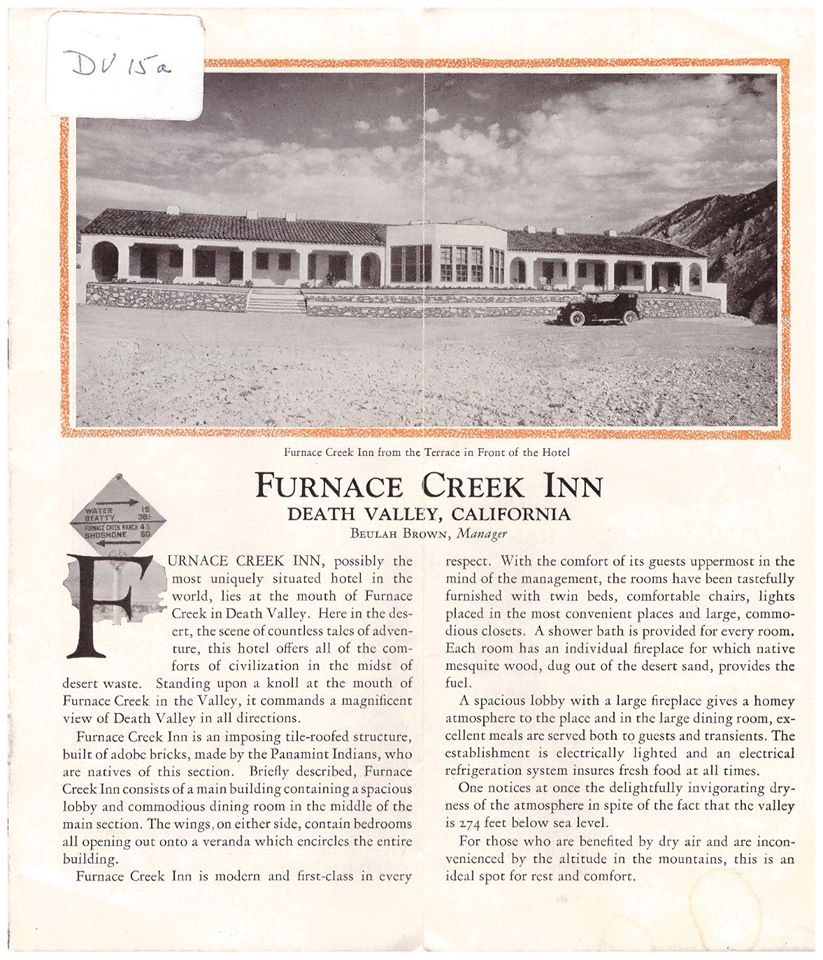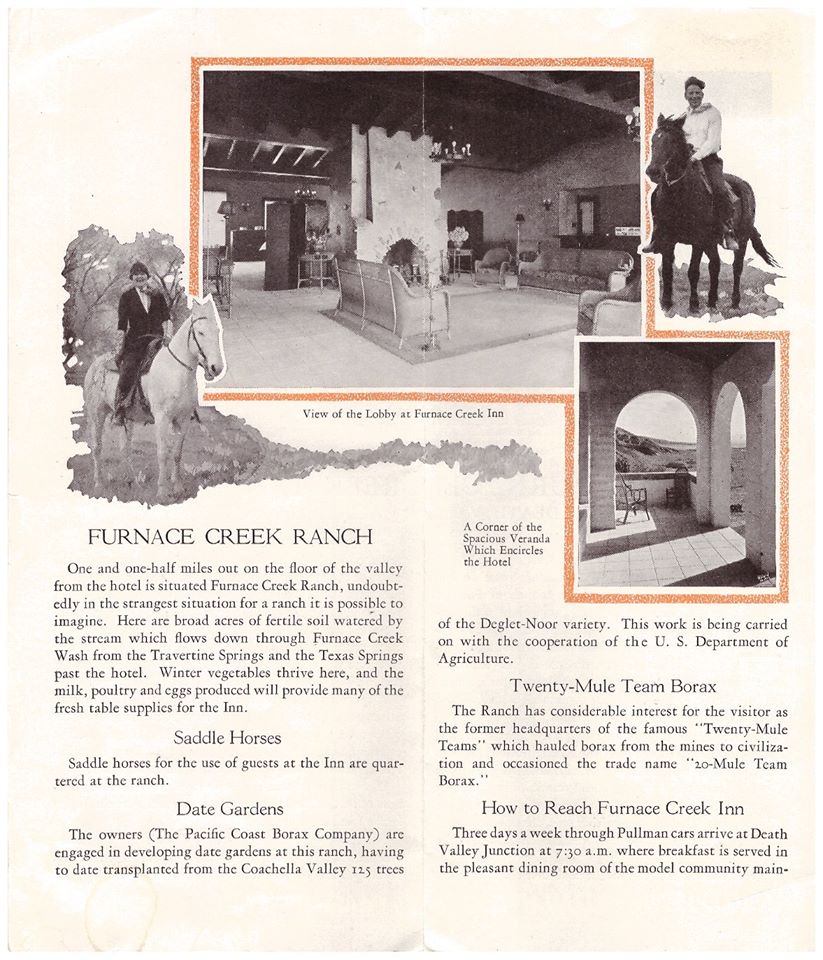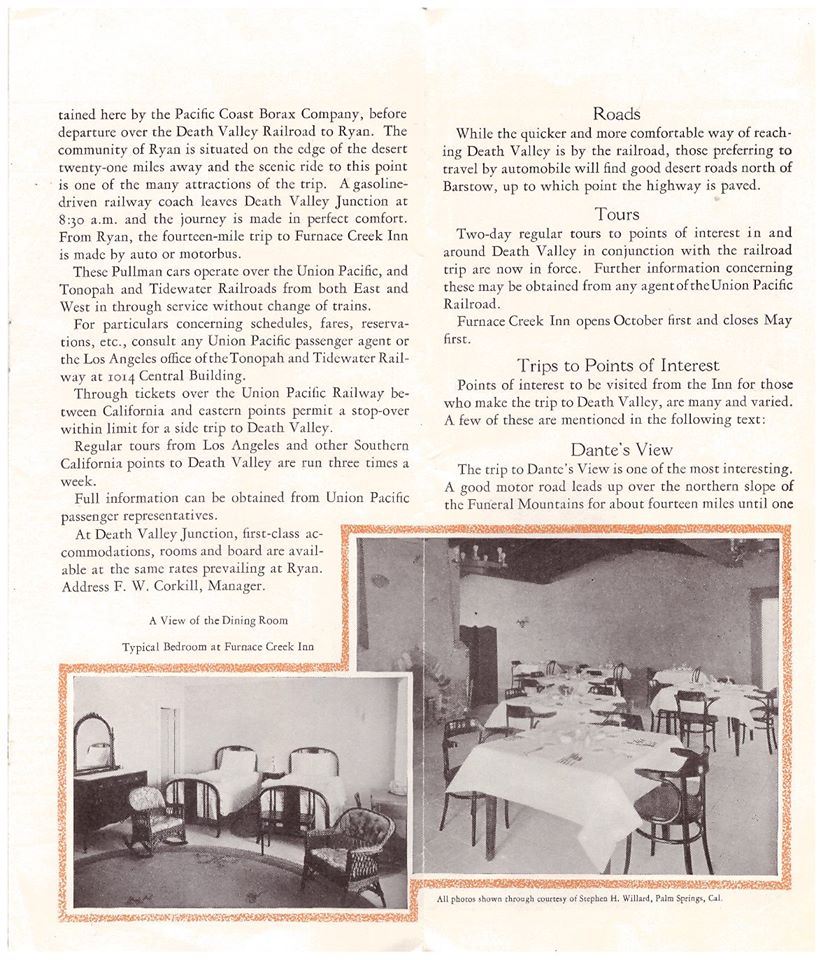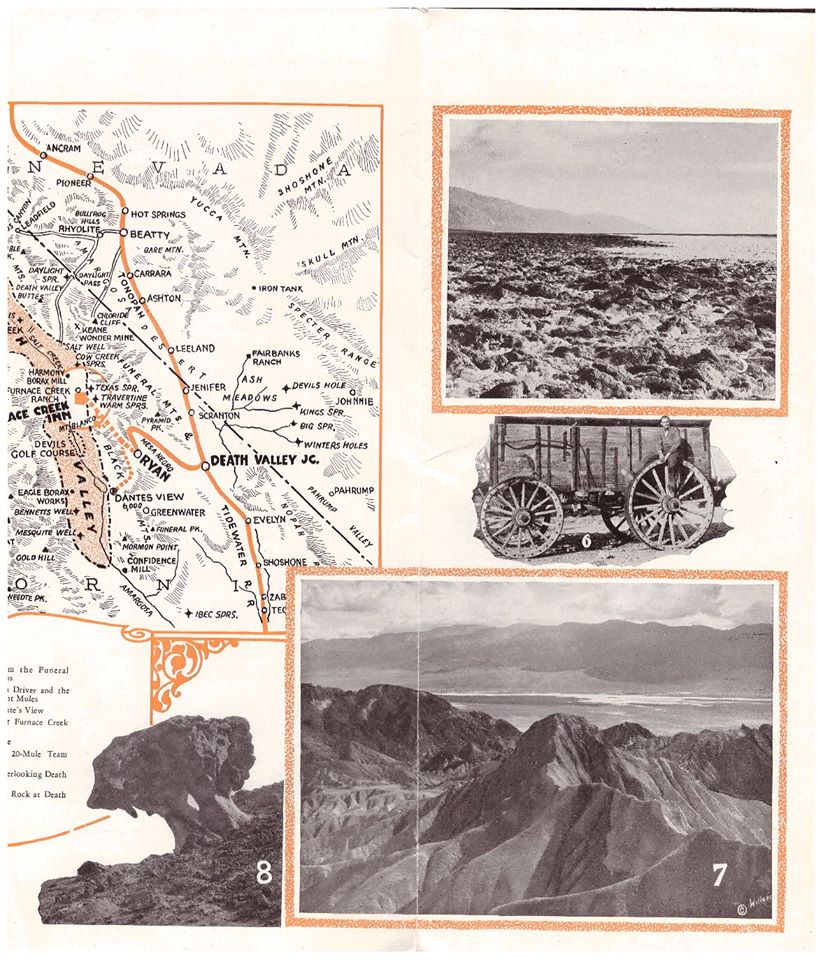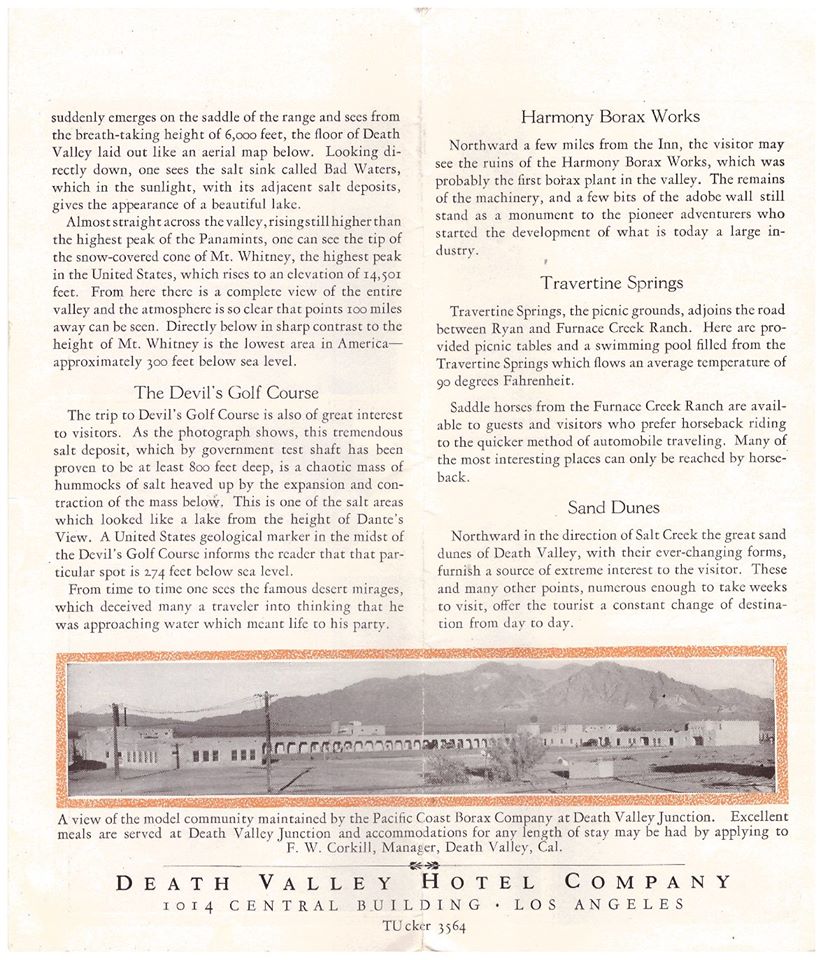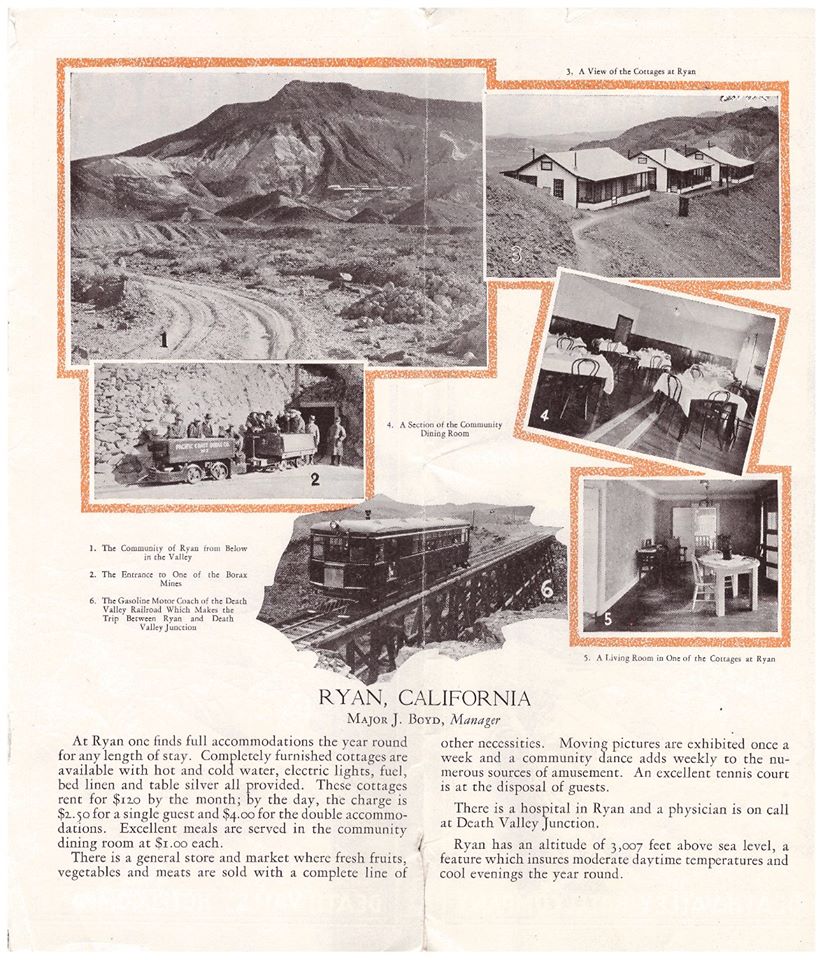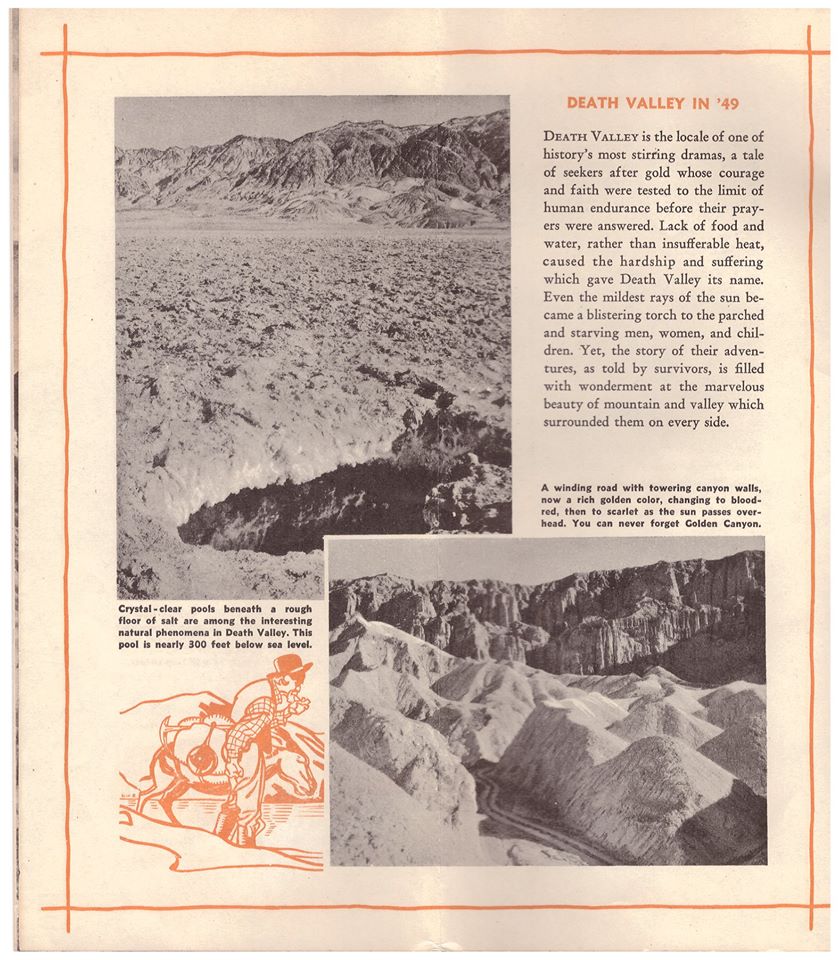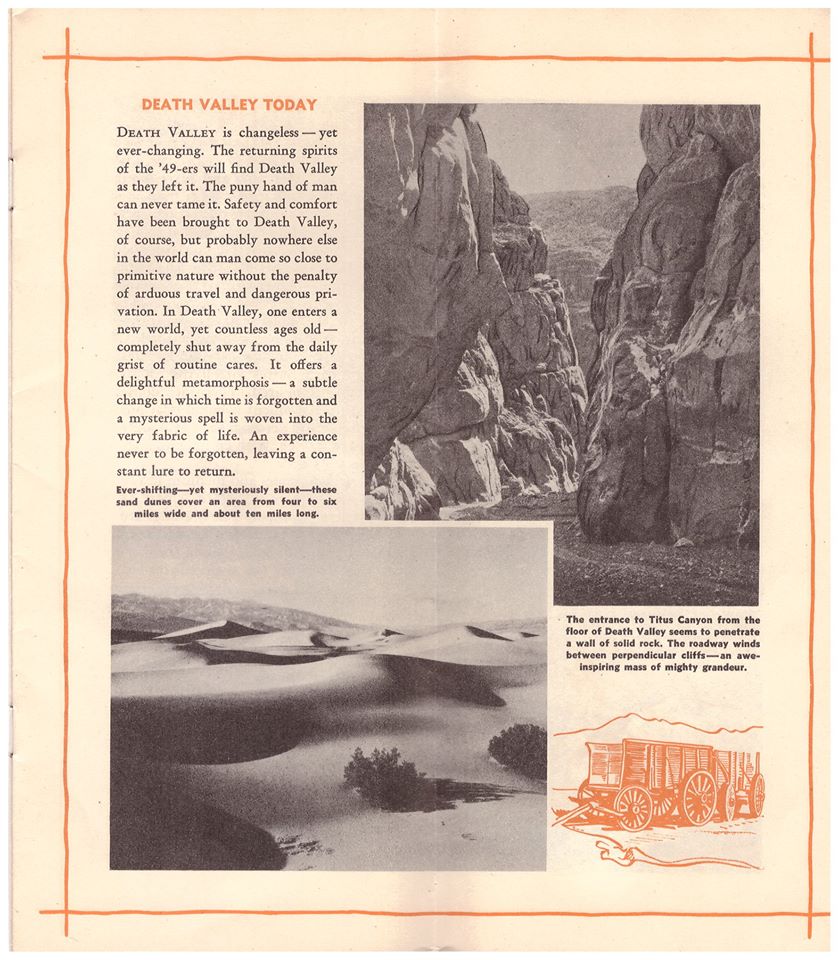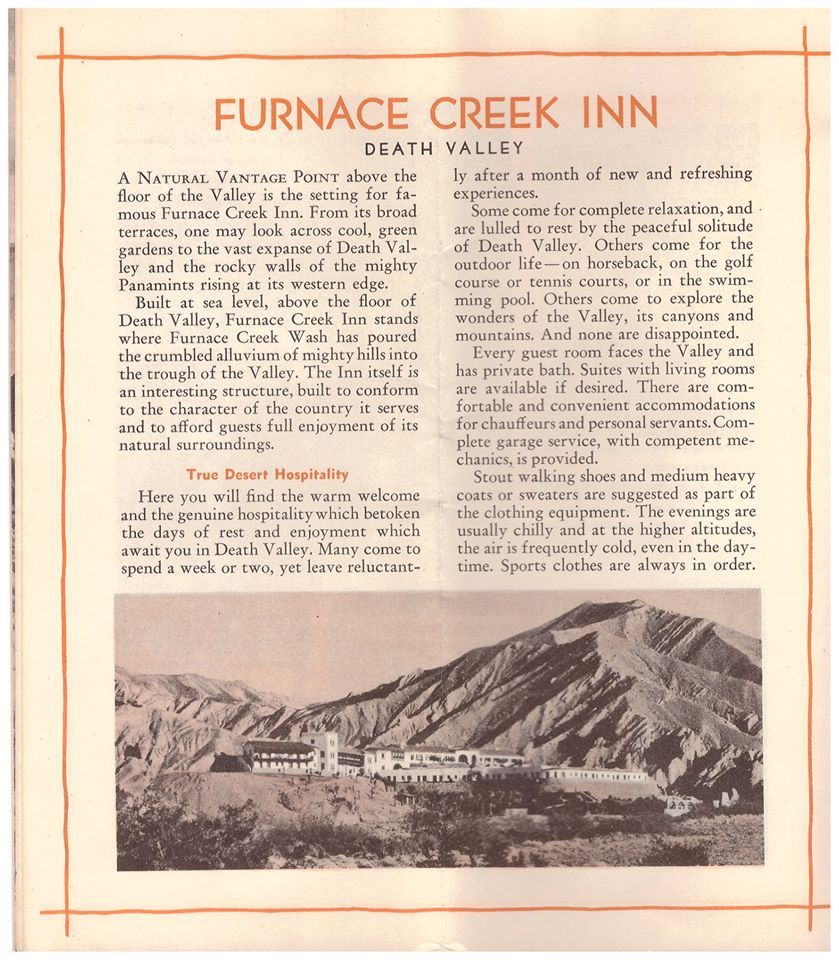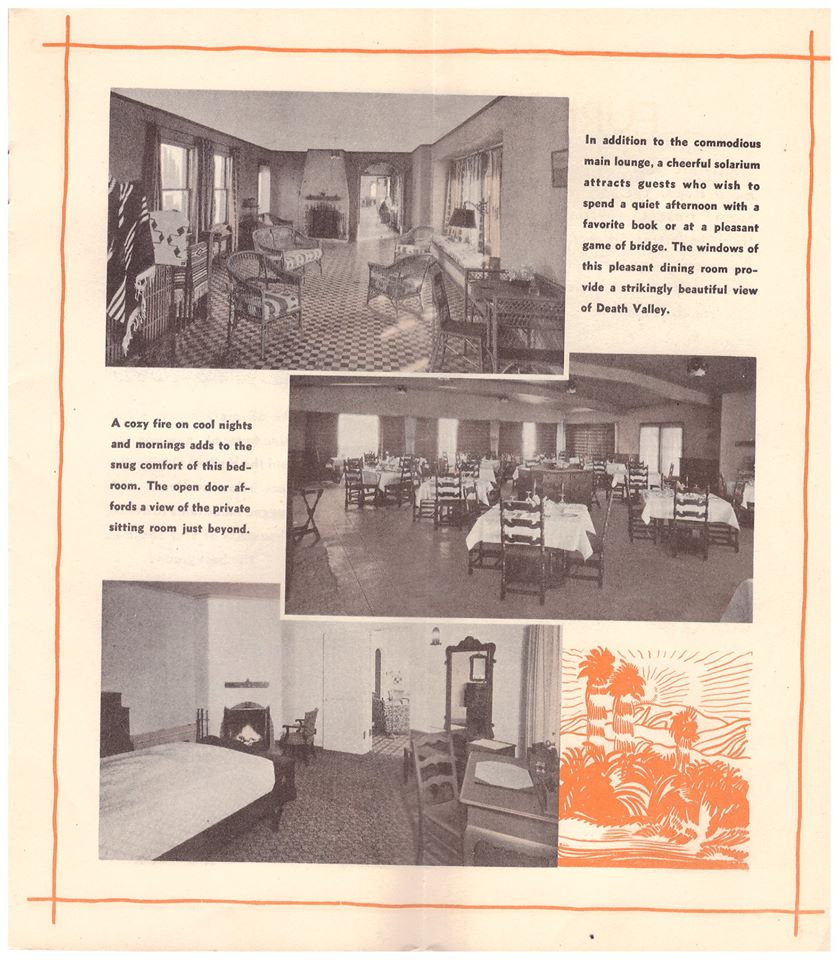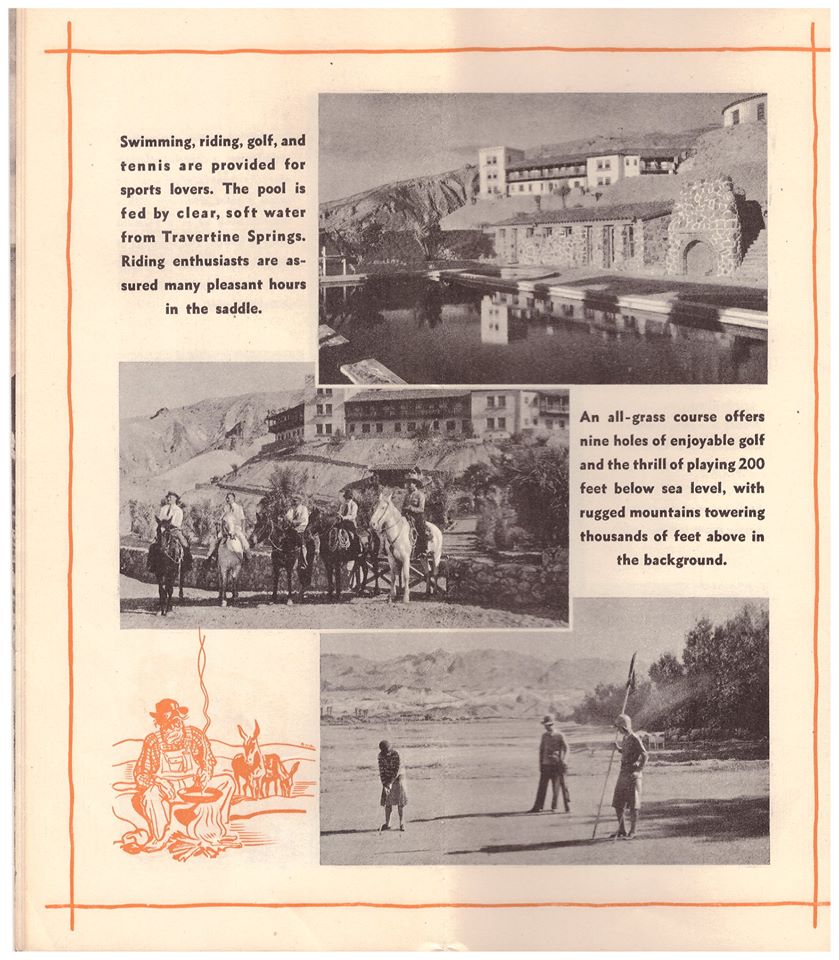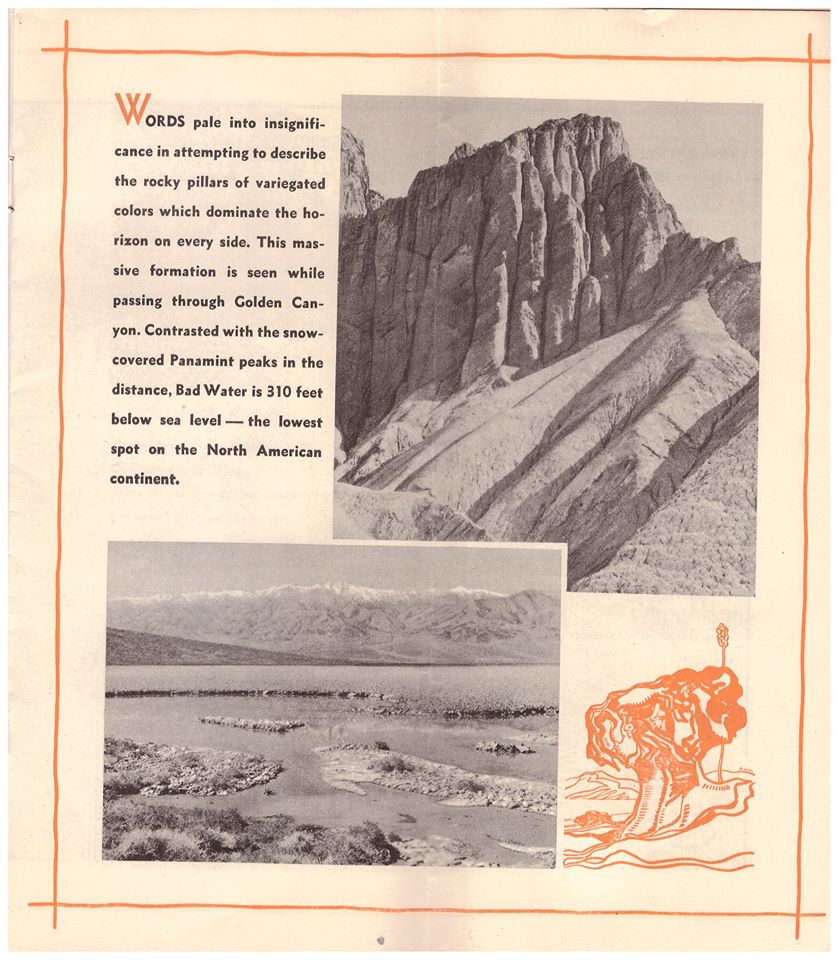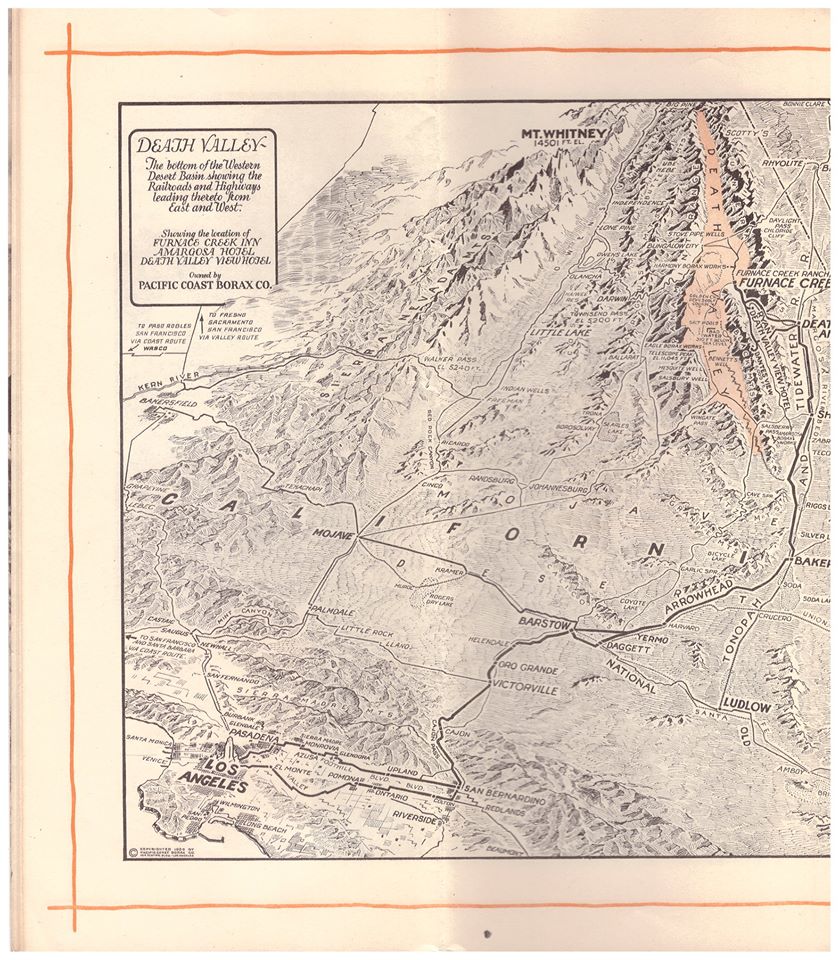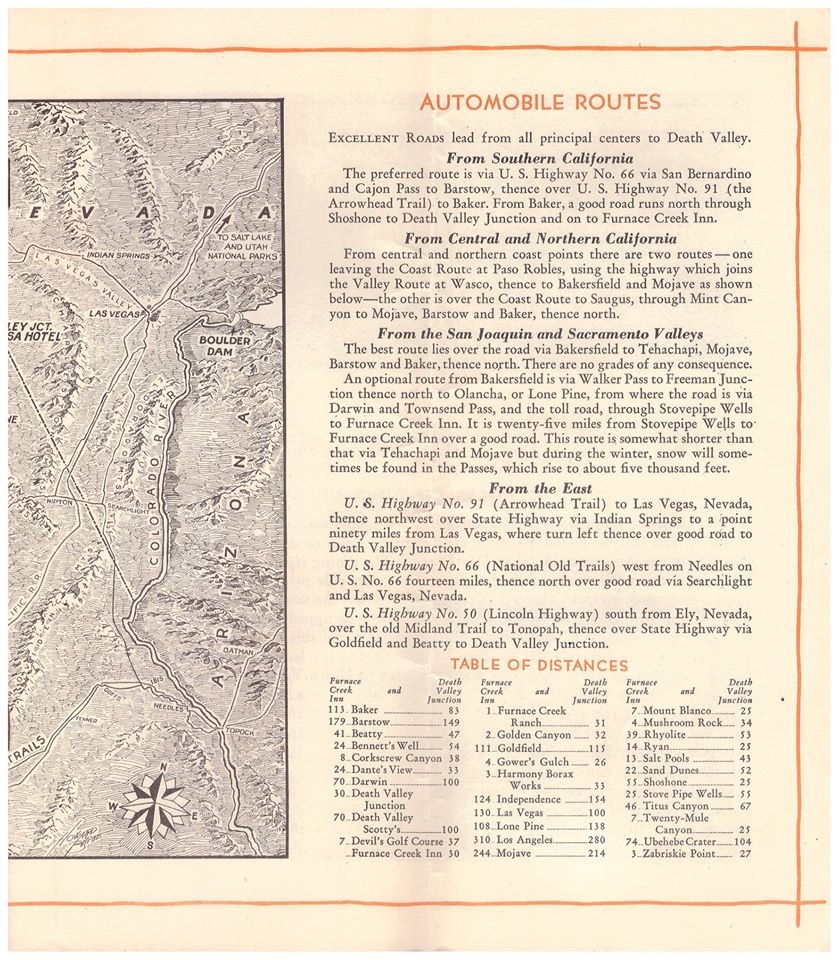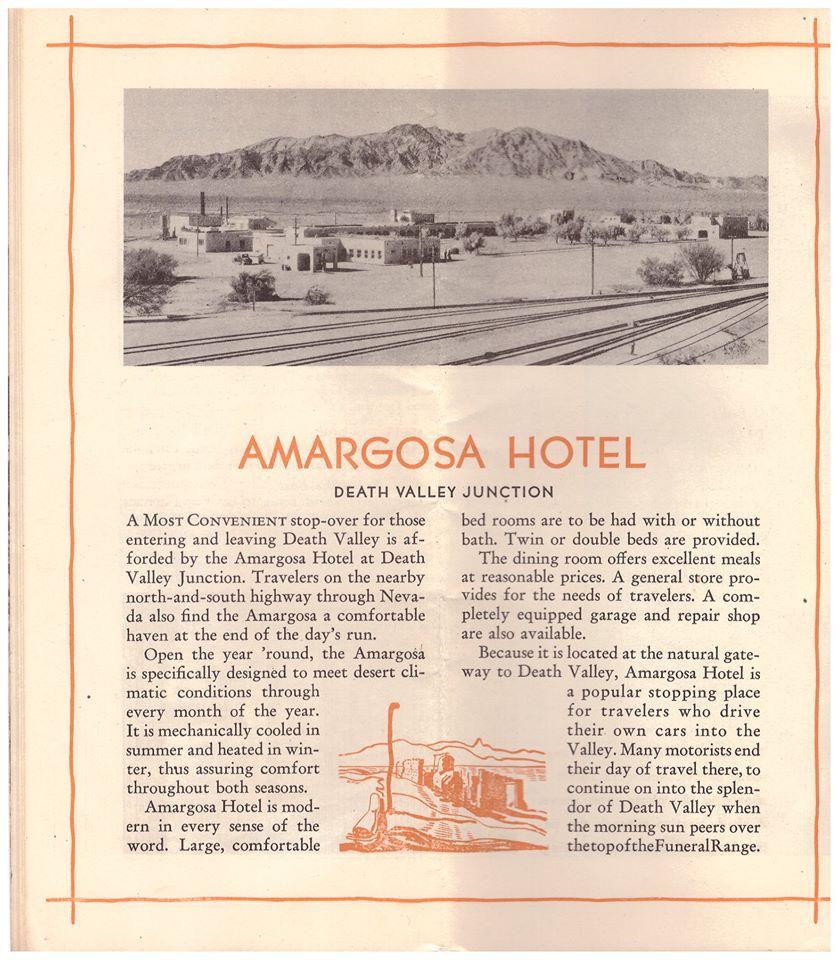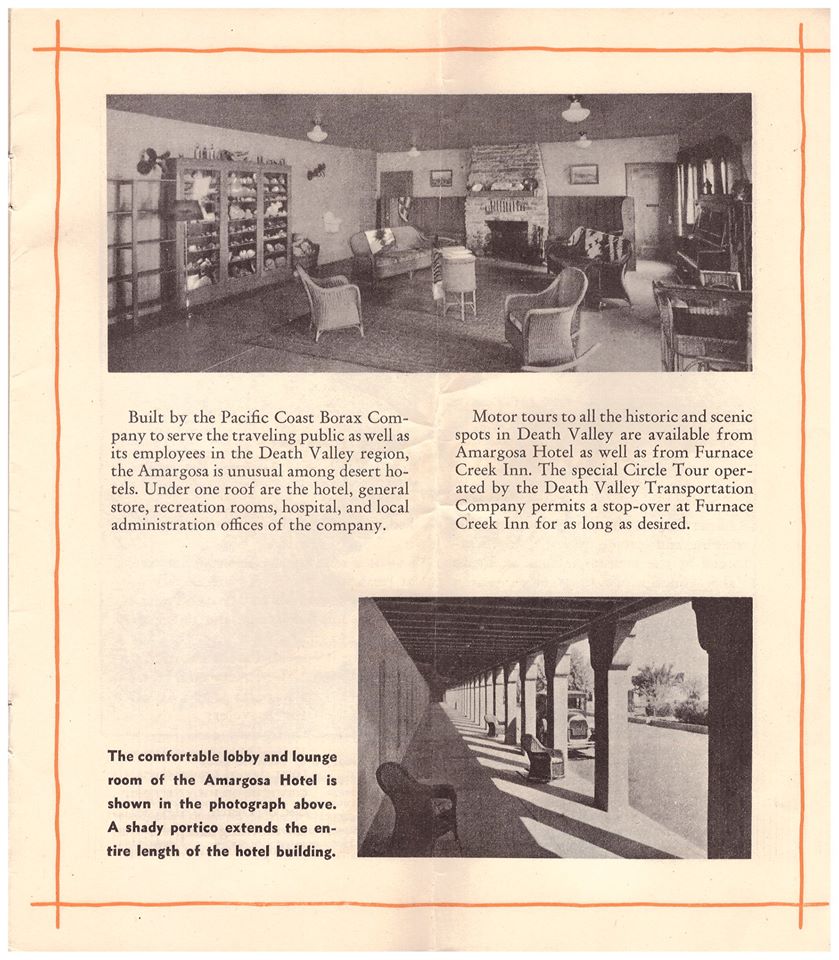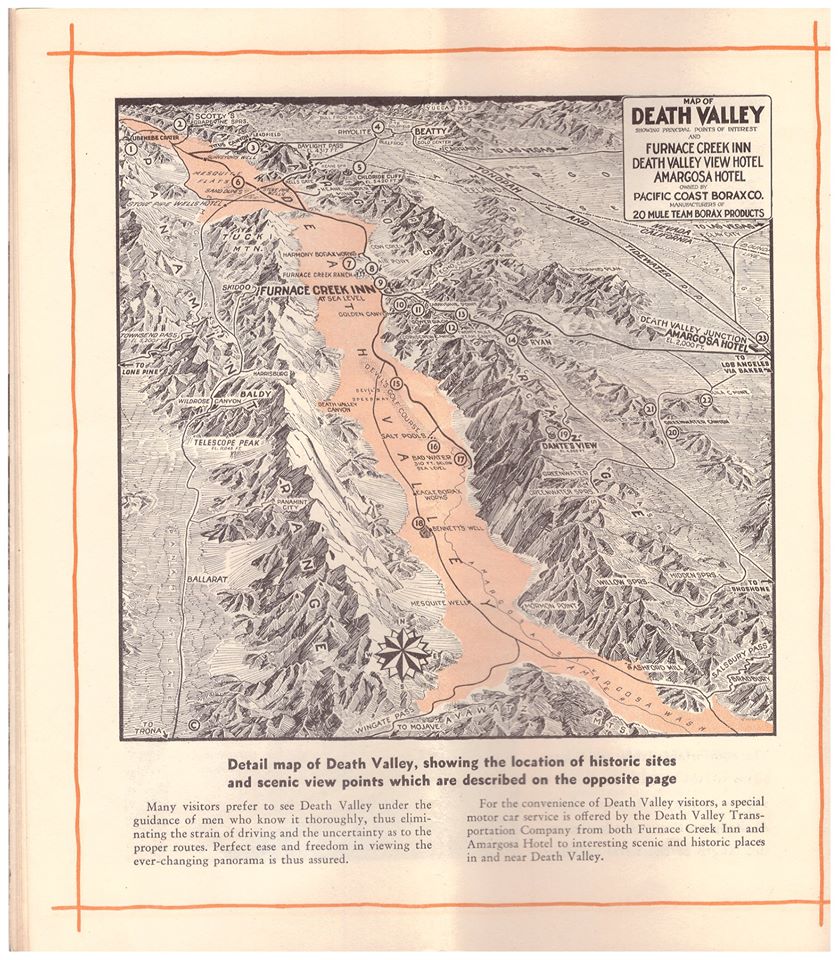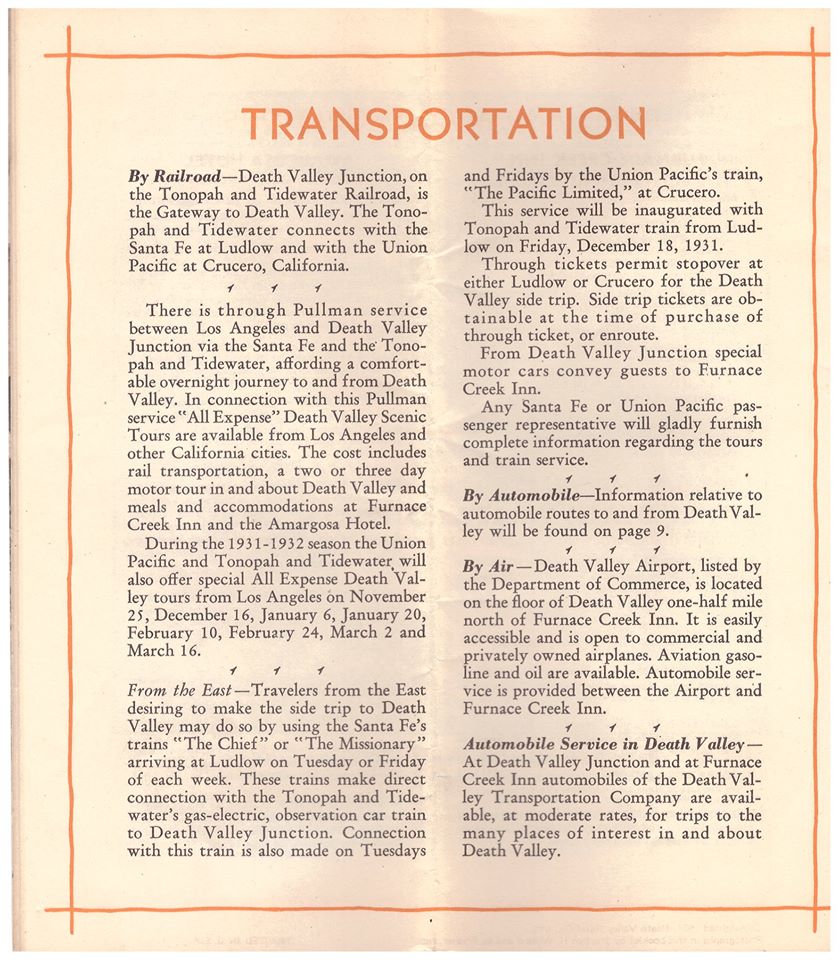C.C. Pierce
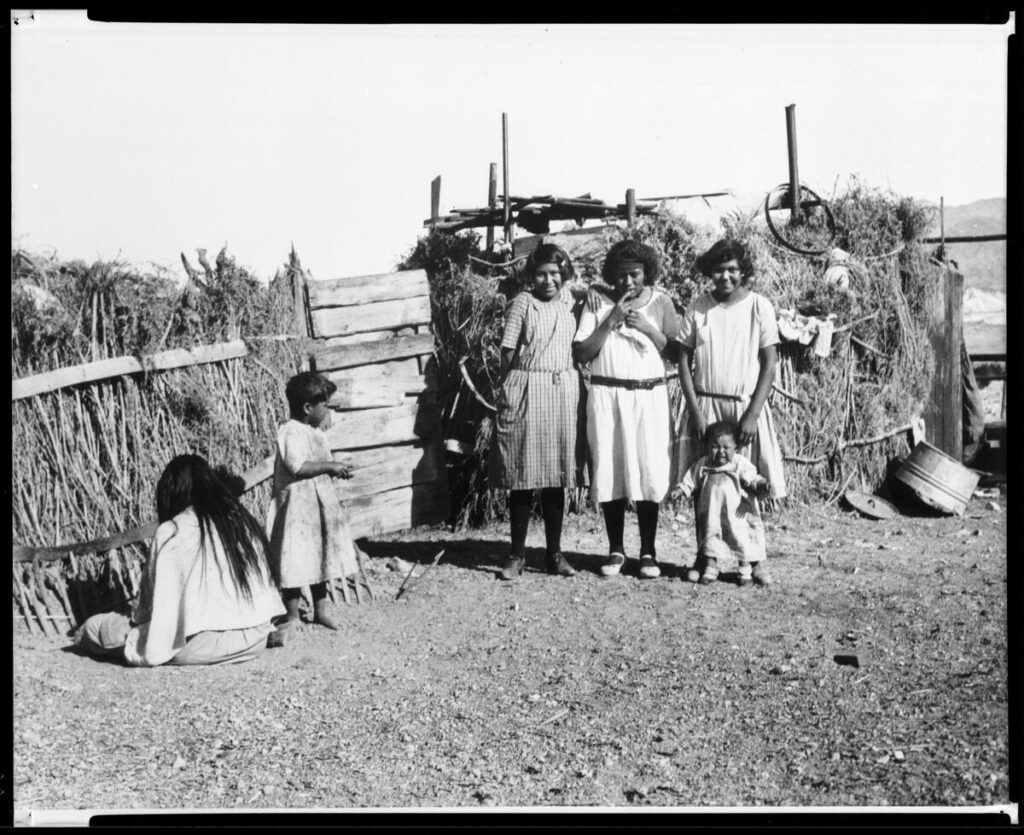
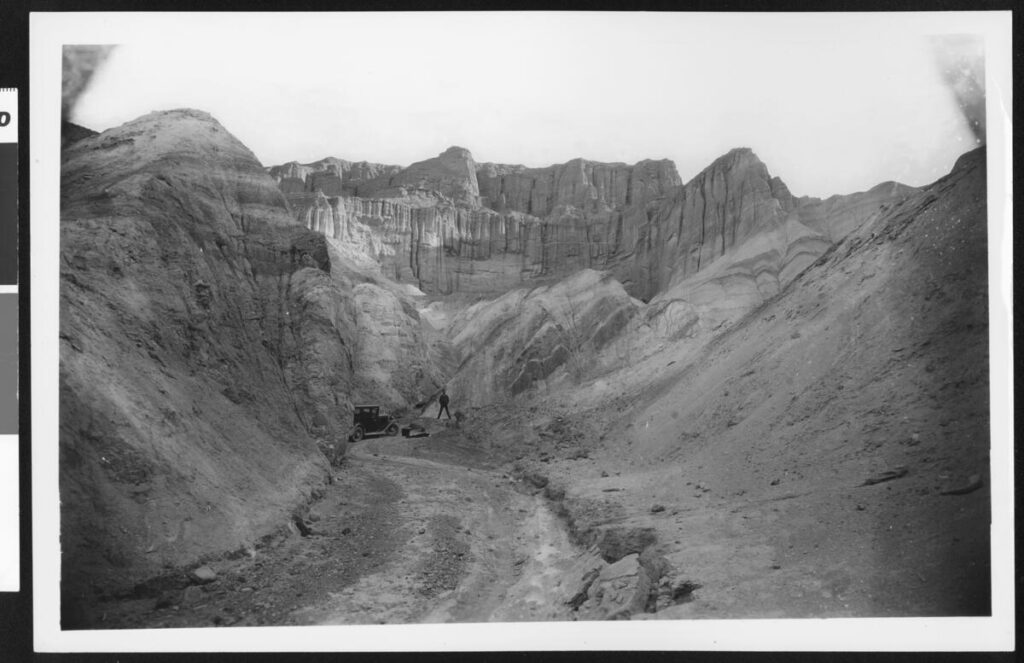
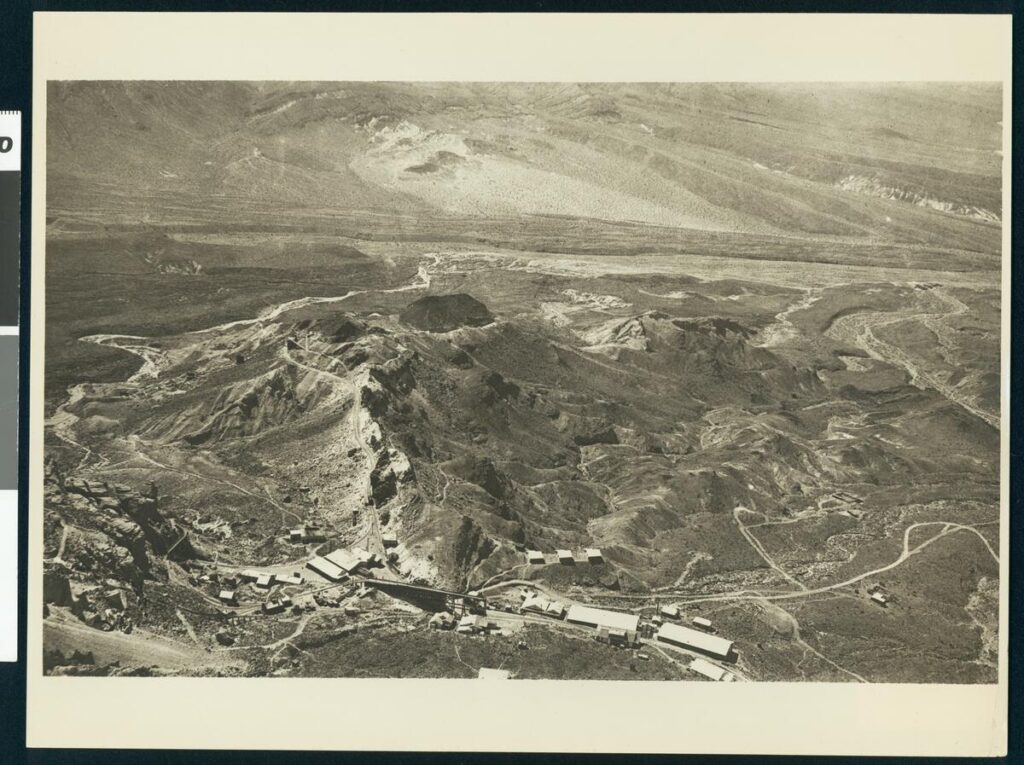
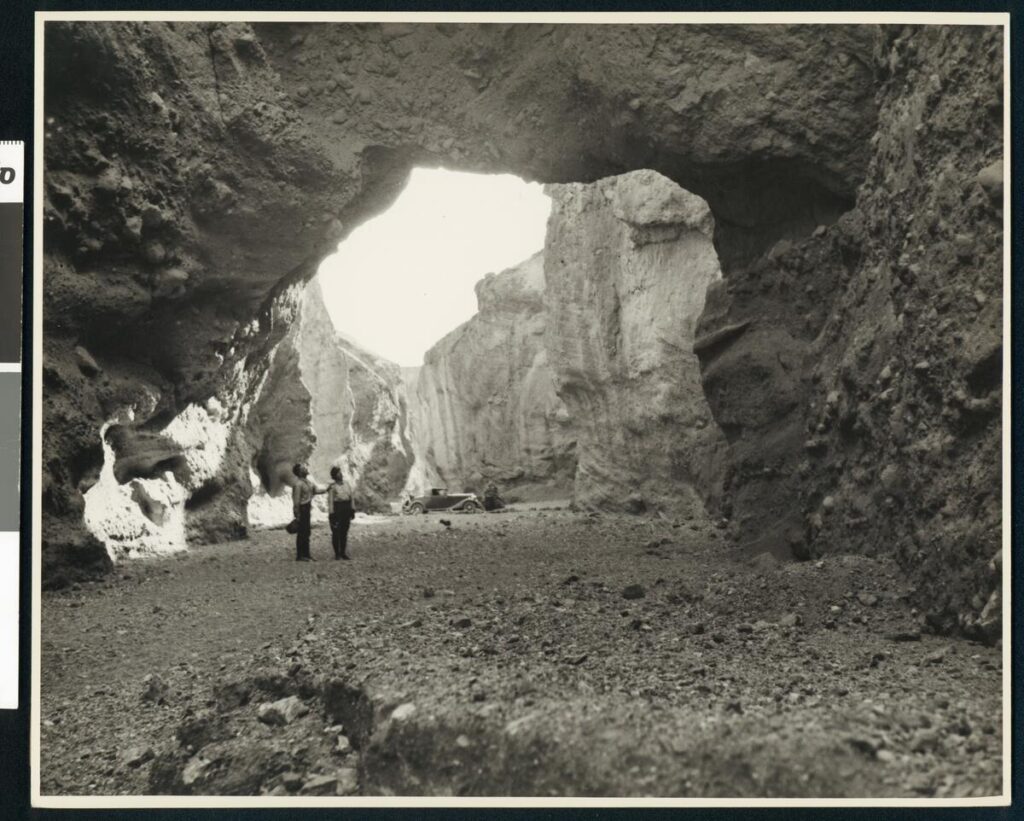
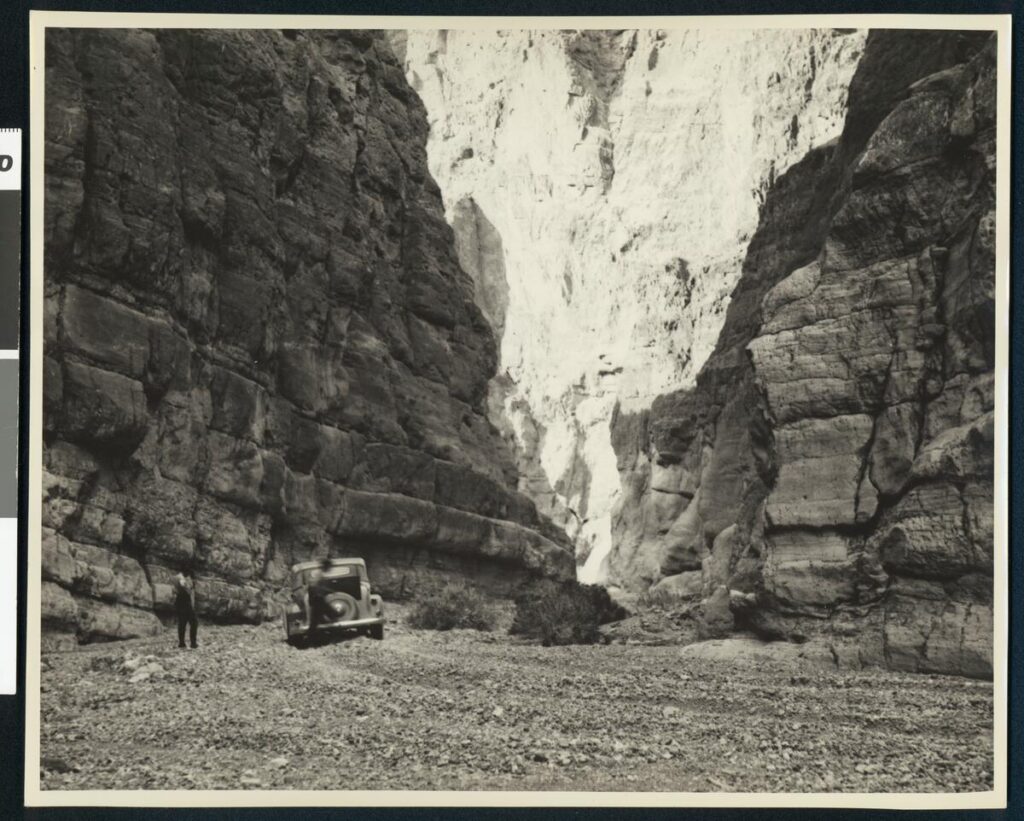
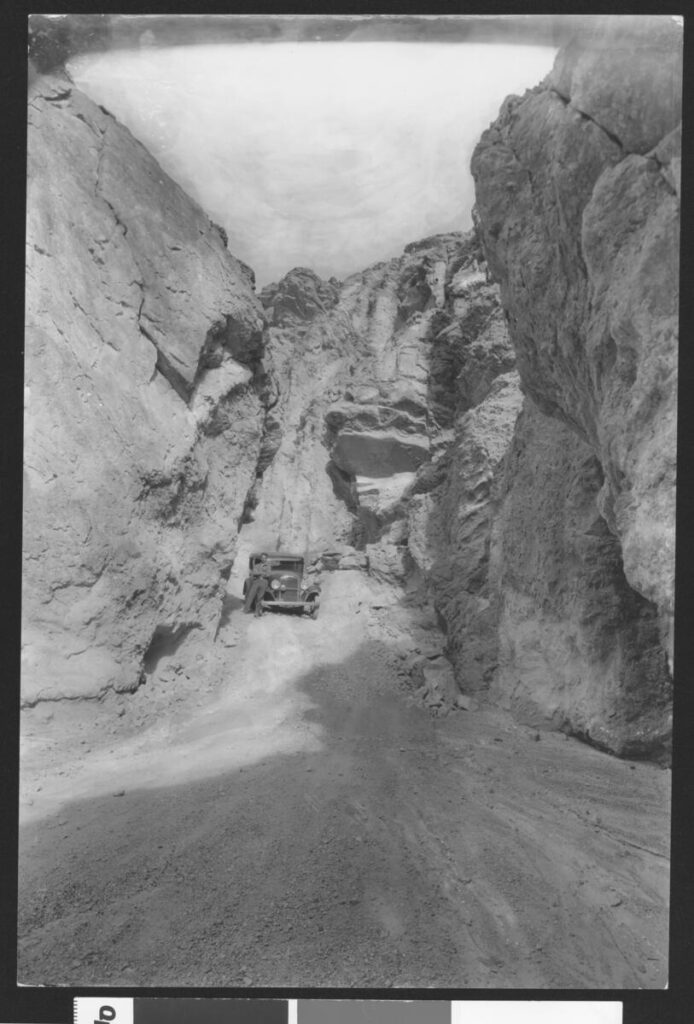

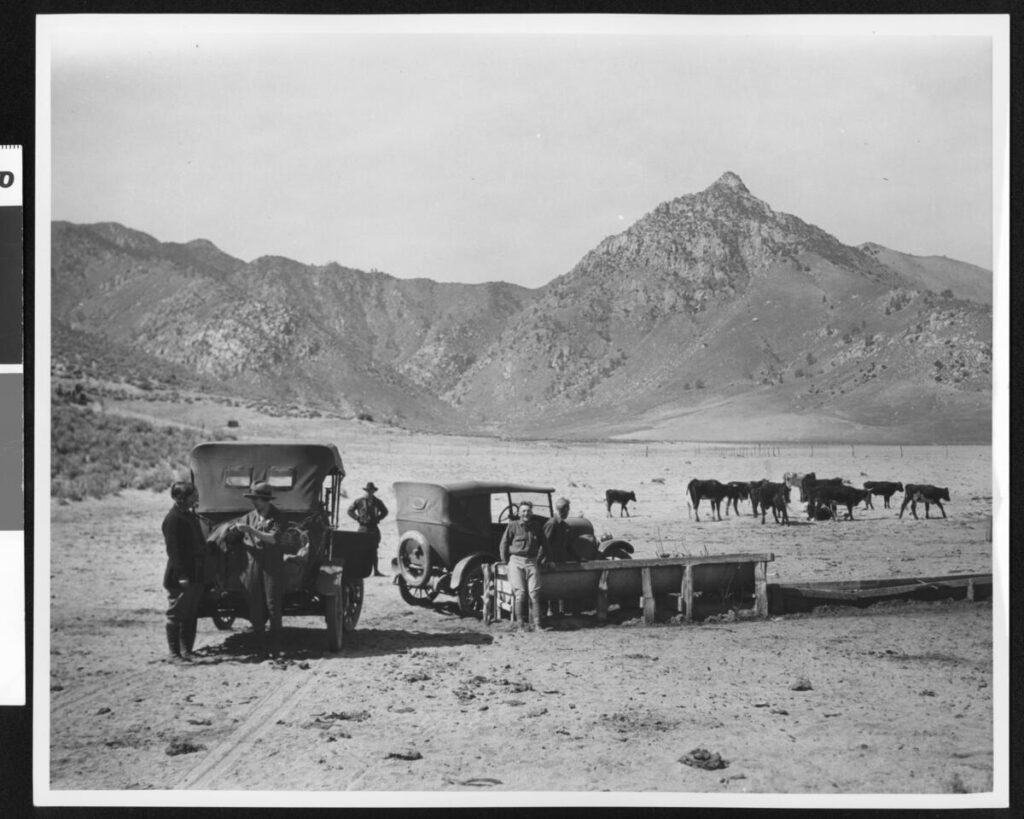
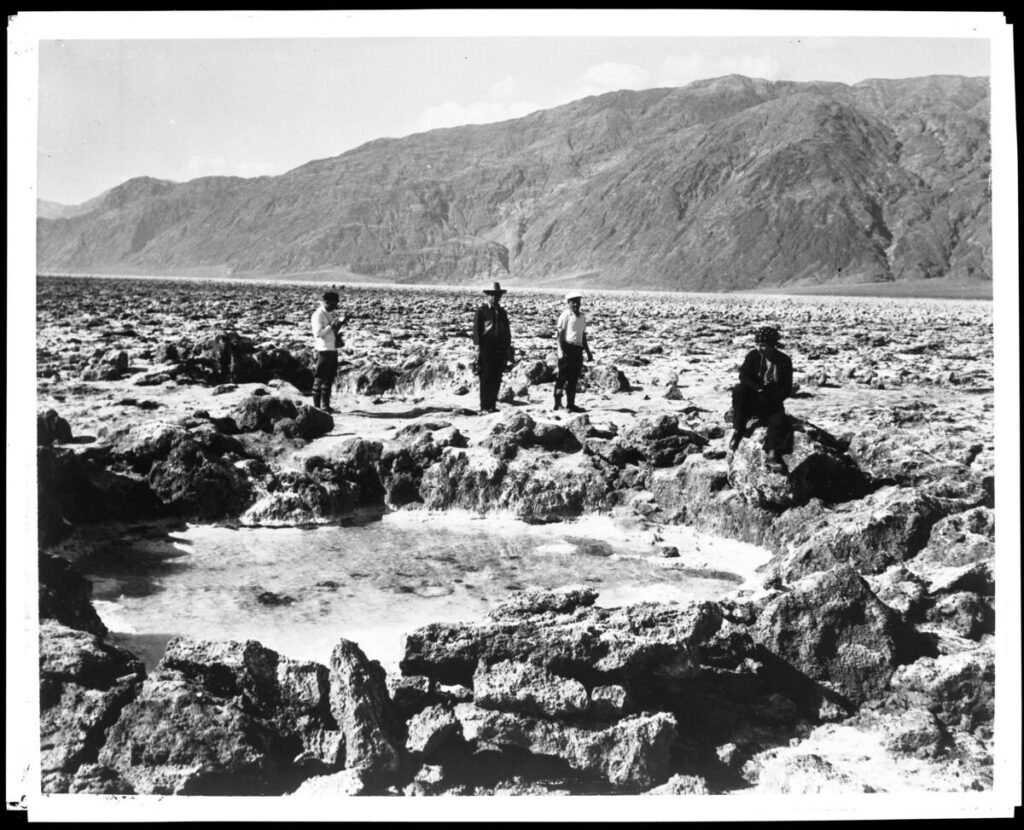
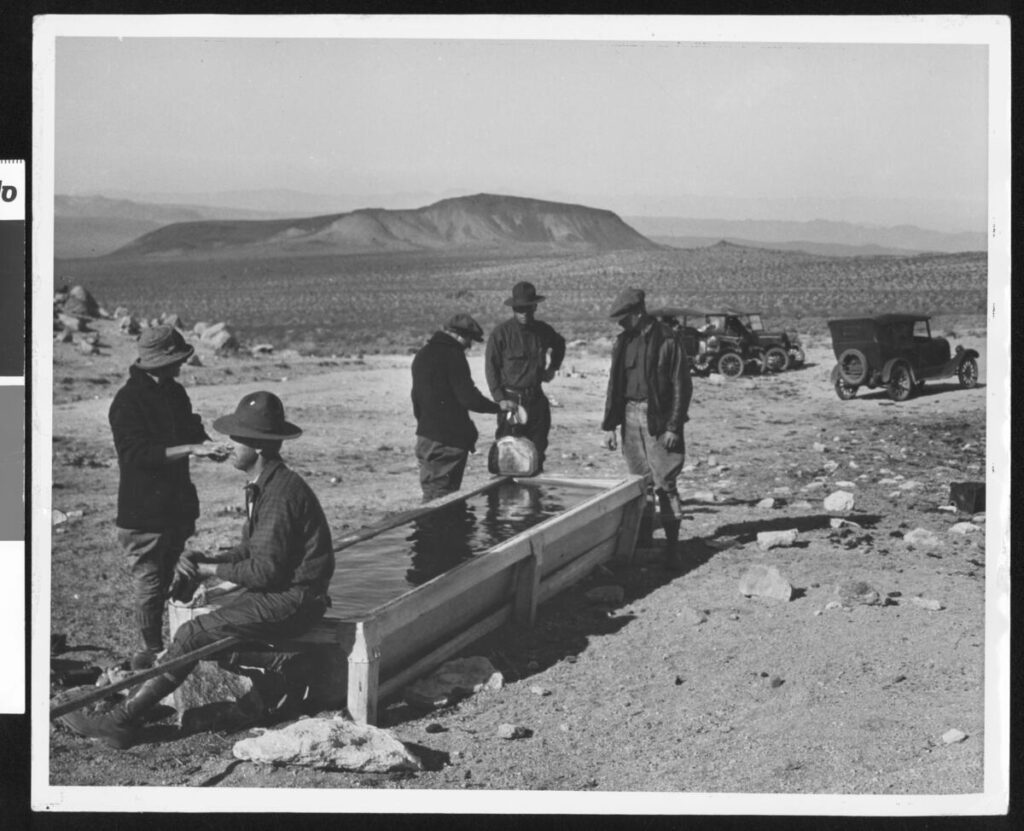
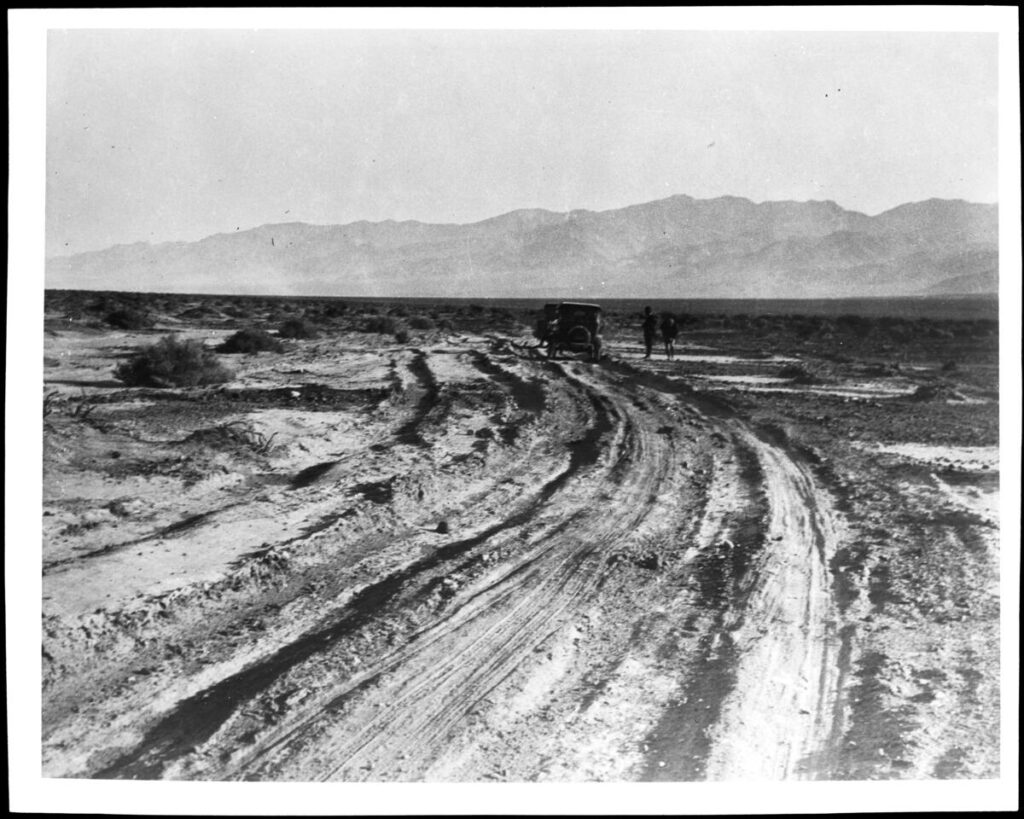
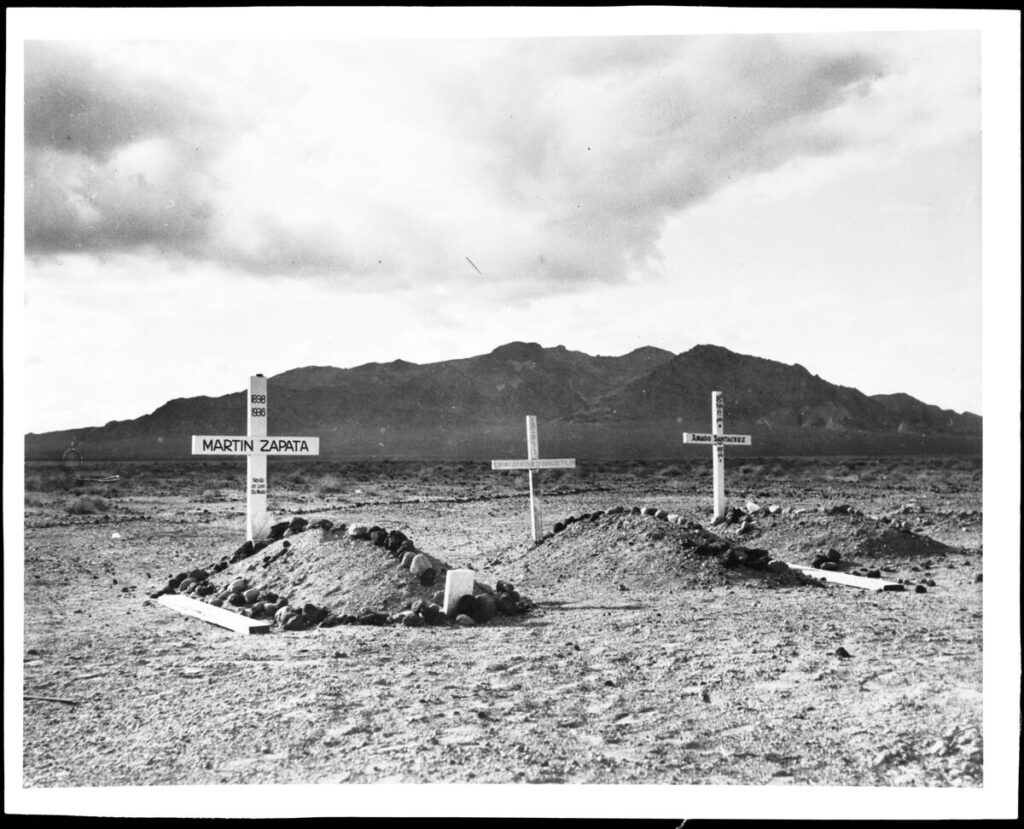
C.C. Pierce













Death Valley was having one of its periodic wind storms when the tourists drove up in front of Inferno store to have their gas tank filled.
Hard Rock Shorty was seated on the bench under the lean-to porch with his hat pulled down to his ears to keep it from blowing away.
“Have many of these wind storms?” one of the dudes asked.
“Shucks, man, this ain’t no wind storm. Jest a little breeze like we have nearly every day. You have to go up in Windy Pass in the Panamints to find out what a real wind is like.
“Three-four years ago I wuz up there doin’ some prospectin’. Got together a little pile o’ wood an’ finally got the coffee to boilin’. Then I set it on a rock to cool while I fried the eggs.
“About that time one of them blasts o’ wind come along and blowed the fire right out from under the fryin’ pan. Blowed ‘er away all in one heap so I kept after it tryin’ to keep that fryin’ pan over the fire to git my supper cooked.
“I usually like my eggs over easy, but by the time 1 got one side done I wuz all tired out so I let ‘er go at that. Had to walk four miles back to the coffee pot.”
from; Desert Magazine – December 1953
Once I asked Shorty Harris how he obtained his grubstakes. “Grubstakes,” he answered, “like gold, are where you find them. Once I was broke in Pioche, Nev., and couldn’t find a grubstake anywhere. Somebody told me that a woman on a ranch a few miles out wanted a man for a few days’ work. I hoofed it out under a broiling sun, but when I got there, the lady said she had no job. I reckon she saw my disappointment and when her cat came up and began to mew, she told me the cat had an even dozen kittens and she would give me a dollar if I would take ’em down the road and kill ’em.
“‘It’s a deal,’ I said. She got ’em in a sack and I started back to town. I intended to lug ’em a few miles away and turn ’em loose because I haven’t got the heart to kill anything.
“A dozen kittens makes quite a load and I had to sit down pretty often to rest. A fellow in a two-horse wagon came along and offered me a ride. I picked up the sack and climbed in.
“‘Cats, eh?’ the fellow said. ‘They ought to bring a good price. I was in Colorado once. Rats and mice were taking the town. I had a cat. She would have a litter every three months. I had no trouble selling them cats for ten dollars apiece. Beat a gold mine.’
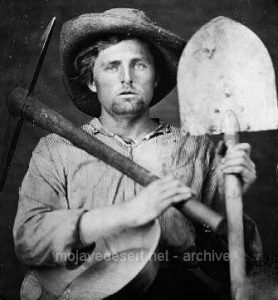
“There were plenty rats in Pioche and that sack of kittens went like hotcakes. One fellow didn’t have any money and offered me a goat. I knew a fellow who wanted a goat. He lived on the same lot as I did. His name was Pete Swain.
“Pete was all lit up when I offered him the goat for fifty dollars. He peeled the money off his roll and took the goat into his shack. A few days later Pete came to his door and called me over and shoved a fifty-dollar note into my hands. ‘I just wanted you to see what that goat’s doing,’ he said.
“I looked inside. The goat was pulling the cork out of a bottle of liquor with his teeth.
“‘That goat’s drunk as a boiled owl,’ Pete said. ‘If I ever needed any proof that there’s something in this idea of the transmigration of souls, that goat gives it. He’s Jimmy, my old sidekick, who, I figgered, was dead and buried.’
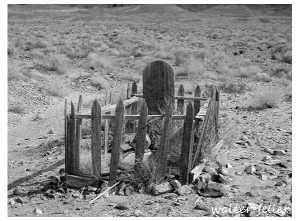
“‘Now listen,’ I said. ‘Do you mean to tell me you actually believe that goat is your old pal, whom you drank with and played with and saw buried with your own eyes, right up there on the hill?’
“‘Exactly,’ Pete shouted, and he peeled off another fifty and gave it to me. So, you see, a grubstake, like gold, is where you find it.”
from:
Loafing Along Death Valley Trails
A Personal Narrative of People and Places
Author: William Caruthers
A few miles east of Shoshone is Chicago Valley, which began in a startling swindle and ended in fame and fortune for one defrauded victim.
A convincing crook from the Windy City found government land open to entry and called it Chicago Valley. It was a desolate area; the only living thing to be seen was an occasional coyote skulking across or a vulture flying over. The promoter needed no capital other than a good front, glib tongue, and the ability to lie without the flicker of a lash.
A few weeks later, Chicago widows with meager endowments, scrub women with savings, and some who coughed too much from long hours in sweatshops began to receive beautifully illustrated pamphlets that described a tropical Eden with lush fields, cooling lakes, and more to the point, riches almost overnight. For $100, anyone concerned would be located.
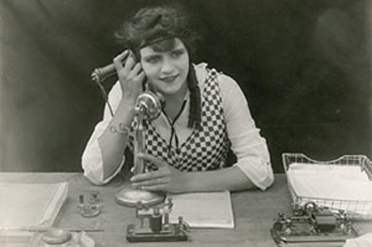
Soon people began to swing off The Goose, as the dinky train serving Shoshone was called, and head for Chicago Valley. Among the victims was a widow named Holmes with a family of attractive, intelligent children. One of these was a vivacious, beautiful teenager named Helen.
The Holmes were handicapped because of tuberculosis in the family. This, in fact, had induced the widow to invest her savings.
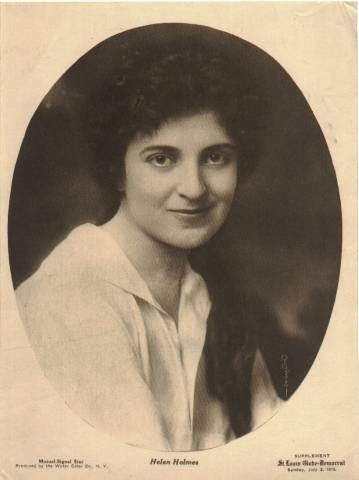
Herman Jones used to ride by the Holmes’ place en route to the Pahrump Ranch on hunting trips and owning several burros; he thought the Holmes’ children would like to have one. Taking the donkey over, he told Helen, “You can use him to work the ranch too. Better and faster than a hoe….” He brought a harness and a cultivator, and showed her how to use the implement.
It was inevitable that investors in Chicago Valley would lose their time, labor, and money.
Thus when Helen Holmes returned the burro to Herman one day, Herman was not surprised when she told him she was on her way to Los Angeles to look for a job.
“But what can you do?”
“I wish I knew. I can get a job washing dishes or waiting on tables.”
Shortly afterward, he heard from her—just a little note saying she was a hello girl on a switchboard. “Knew she’d land on her feet,” Herman grinned, and having a bottle handy, he gurgled a toast to Helen. He had to tell the news, of course, and with each telling, he produced the bottle.
So he was in a pleasant mood when somebody suggested a spot of poker. To mention poker in Shoshone is to have a game, and in a little while, Dad Fairbanks, Dan Modine, deputy sheriff Herman, and two or three others were shuffling chips over in the Mesquite Club.
Herman had the luck and quit with $700. “Fellows,” he said as he folded his money, “take a last look at this roll. You won’t see it again.”
“Oh, you’ll be back,” Fairbanks said.
But Herman didn’t come back. Instead, he went to Los Angeles, and found Helen at the switchboard. She confided excitedly that she had a chance to get into the movies as soon as she could get some nice clothes.
“Fine,” Herman said. “When can I see you?” He made a date for dinner, had a few more drinks and when he met her he had a comfortable binge and a grand idea. “… Listen, Helen. You wouldn’t get mad at a fool like me if I meant well, would you?”
“Why Herman—you know I wouldn’t,” she laughed.
“I’m a little likkered and it’s kinda personal….”
“But you’re a gentleman, Herman—drunk or sober….”
“I’ve been thinking of this picture business. I nicked Dad Fairbanks in a poker game. You know how I am. Lose it all one way or another. You take it and buy what you need, and it’ll do us both some good.”
The refusal was quick. “It’s sweet of you, Herman, but not that. I just couldn’t.”
“You can borrow it, can’t you … so I won’t drink it up?”
The argument won, and soon theatergoers all over the world were clutching their palms as they watched the hair-raising escapes from death that pictured “The Perils of Pauline”—the serial that made Helen Holmes one of the immortals of the silent films. She died at 58 on July 8, 1950.
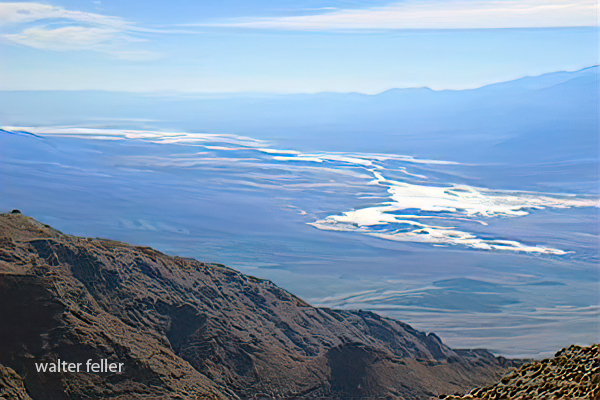
Death Valley National Park is known for its extreme temperatures, vast desert landscapes, and unique geological features. Located in Eastern California, this national park is a treasure trove for geology enthusiasts.
Death Valley’s geological history dates back millions of years. The valley is part of the larger Basin and Range Province, characterized by its numerous mountain ranges and elongated valleys. The formation of Death Valley can be attributed to the complex interplay of tectonic forces.
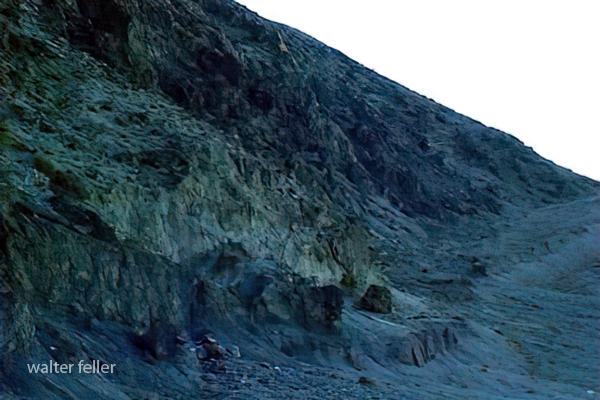
One of the key geological features of Death Valley is the presence of faults. Numerous faults, including the prominent Death Valley Fault Zone, crisscross the region. These faults have played a significant role in shaping the landscape, creating dramatic uplifts and sinkholes.

Death Valley is home to several unique geological features, including expansive salt flats and playa. The salt flats, such as the mesmerizing Badwater Basin, are formed when water dissolves minerals from the mountains and then evaporates, leaving behind a thick crust of salt. These salt flats provide a surreal and otherworldly experience for visitors.

The Mesquite Flat Sand Dunes offer a striking contrast to the arid landscape of Death Valley. These dunes are formed by the accumulation of wind-blown sand over thousands of years. The shifting dunes create stunning desert scenery and are a popular destination for photographers and nature enthusiasts.

Death Valley is a geological time capsule, preserving a rich fossil record that spans millions of years. Fossils of ancient marine life, plants, and animals have been discovered, providing invaluable insights into the region’s past. These fossils tell the story of a time when Death Valley was submerged under a vast inland sea.

Volcanic activity has also left its mark on Death Valley’s geology. The park is home to several cinder cones, lava flows, and volcanic craters. Ubehebe Crater, a massive volcanic crater, is a testament to the violent eruptions that occurred in the region thousands of years ago.

Death Valley National Park is a geologist’s paradise, offering a glimpse into the dynamic forces that have shaped our planet. From the towering mountain ranges to the vast salt flats and mesmerizing sand dunes, the geology of Death Valley is a testament to nature’s immense power and beauty. Exploring this unique landscape is a humbling experience that allows us to appreciate the Earth’s geological history and its ongoing processes of change and transformation.
(c)Walter Feller
from Chapter XXV – Ballarat. Ghost Town — Loafing Along Death Valley Trails by William Carruthers
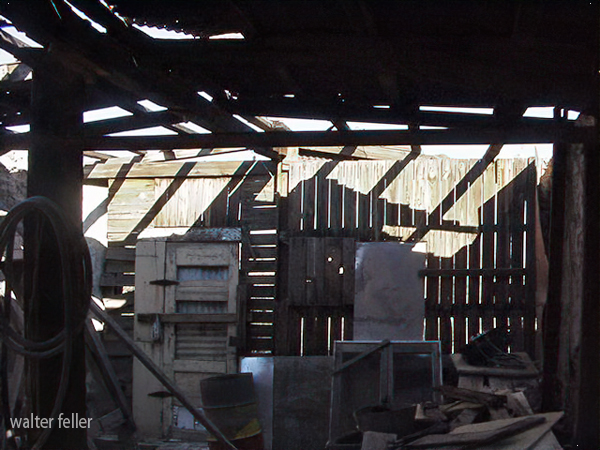
A familiar figure throughout Death Valley country was Johnny-Behind-the-Gun—small and wiry and as much a part of the land as the lizard. His moniker was acquired from his habit of settling disputes without cluttering up the courts. Johnny, whose name was Cyte, accounted for three or four sizable fortunes. Having sold a claim for $35,000 he once bought a saloon and gambling hall in Rhyolite, forswearing prospecting forever.
Johnny advertised his whiskey by drinking it and the squareness of his game, by sitting in it. One night the gentleman opposite was overwhelmed with luck and his pockets bulged with $30,000 of Johnny’s money. Having lost his last chip, Johnny said, “I’ll put up dis place. Ve play vun hand and quit.”
Johnny lost. He got up, reached for his hat. “Vell, my lucky friend, I’ll take a last drink mit you.” He tossed the liquor, lighted a cigar. “Goodnight, chentlemen,” he said. “I go find me anudder mine.”
Johnny had several claims near the Keane Wonder in the Funeral Mountains, held by a sufferance not uncommon among old timers, who respected a notice regardless of legal formalities.
Senator William M. Stewart, Nevada mining magnate, had employed Kyle Smith, a young mining engineer to go into the locality and see what he could find. Smith, a capable and likable chap, in working over the districts, located several claims open for filing by reason of Johnny’s failure to do his assessment work.
It is not altogether clear what happened between Johnny and Smith, but Smith’s body was found after it had lain in the desert sun all day. There being no witnesses the only fact produced by sheriff and coroner was that Smith was dead. Johnny went free. Other escapades with Johnny-Behind-the-Gun occurred with such frequency that he was finally removed from the desert for awhile as the guest of the state.
In a deal with Tom Kelly, Johnny was hesitant about signing some papers according to an understanding. His trigger quickness was explained to Kelly who was not impressed. He went to Johnny and asked him to sign up. Johnny refused. Kelly said calmly, “Johnny, do you see that telephone pole?”
“Yes, I see. Vot about?”
“If you don’t sign, you’re going to climb it.” Johnny signed. He put his gun away when he acquired a lodging house at Beatty, where he died in 1944.
Featuring Amargosa Hotel, Death Valley Junction & Furnace Creek Inn, Death Valley – 1931

